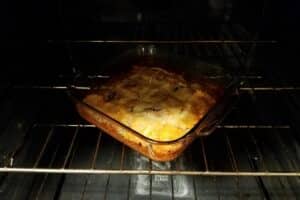Are you considering adding a glass top gas stovetop to your kitchen and want to know if there are any disadvantages? Maybe you have recently moved into a property with a glass top gas stovetop and want to know if they are safe?
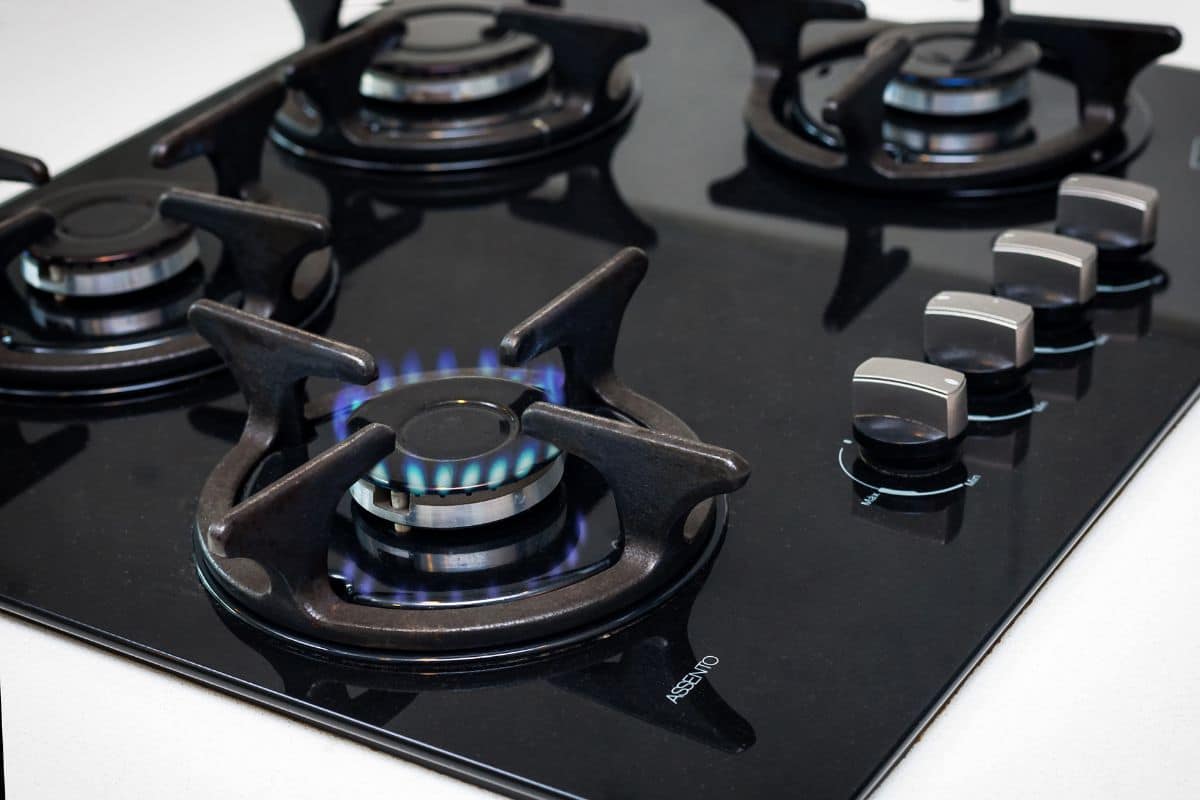
Or are you curious and want to know more? No matter the reason that brought you here today, we have the answer for you!
Finding out if there are disadvantages and drawbacks to glass top gas stove tops can be tricky, especially if you have never had one before. You head online for some answers but are met with page after page of confusing and conflicting advice.
Frustrated and disappointed, you are left unsure who to trust or where to turn. How will you know if glass top gas stove tops are a good choice?
Well, you can turn to us for all your answers! Today we are here, swooping in to save the day. Keep reading to see all of the disadvantages and drawbacks of glass top gas stovetops.
We have everything you need to know below to help you decide if it is a worthy addition to your kitchen or not.
Are There Drawbacks To A Glass Cooktop Stove?
Let’s dive straight into it! There are a few drawbacks to a glass gas stove top. Now, not all of these can impact your usage of the stove, but it’s worth being aware of them anyway!
The main drawbacks you should be aware of are scratches, breakage, and some other damages. Let’s take a look at these issues in closer detail now.
Breakage
Breakage should be a top concern when it comes to your glass top stove top! Glass is prone to breakage no matter where it is, and your stove top is no different.
Temperature differences, in particular, can cause issues here. You could place a hot pan on a cold stove, or vice versa, causing the glass to shatter or crack.
You also need to take care when you handle things above the stovetop. Dropping a heavy pan or other object onto the glass can cause it to smash into pieces.
Similarly, a pan that has been boiling dry (without any liquid in) can break the glass or even become fused to the cooktop! You should avoid boiling a pan dry to prevent this from happening.
Scratches
Scratches are another issue you should be aware of with a glass gas stove. As most of the stovetop is made of glass, it is delicate and fragile and can be prone to scratches, even when made with extra durable or scratch-resistant glasses.
You should avoid dragging a hot pan over the glass surface, as it can scratch the cooktop as it moves. Instead, you will want to lift and place all your pans onto the surface, rather than dragging them.
You will also need to take care when using rough pans, like cast iron ons, or utensils with a coarse bottle surface.
These can also cause scratches on a glass stovetop. You might want to replace your current utensils if you have the budget or take extra care when using them if not.
Avoid cleaning your glass stove top with metal scouring pads or coarse cleaners as they can also cause scratches.
Why should we avoid scratching our stovetop? Prolonged scratches can cause the glass to crack and shatter over time, so that needs to be avoided as much as possible.
Is Glass Top Gas Stoves Safe?
Yes, glass top gas stoves are safe! Remember, for these to be produced and used across the globe, they will have needed to undergo several tests, so you can rest assured that a glass top gas stove is safe to use.
Glass top gas stoves have a better heat distribution than stainless steel gas stoves.
Glass top stoves have a sealed compartment, helping them heat up quicker and cool down quickly too. Plus, the glass later adds extra protection to the stove!
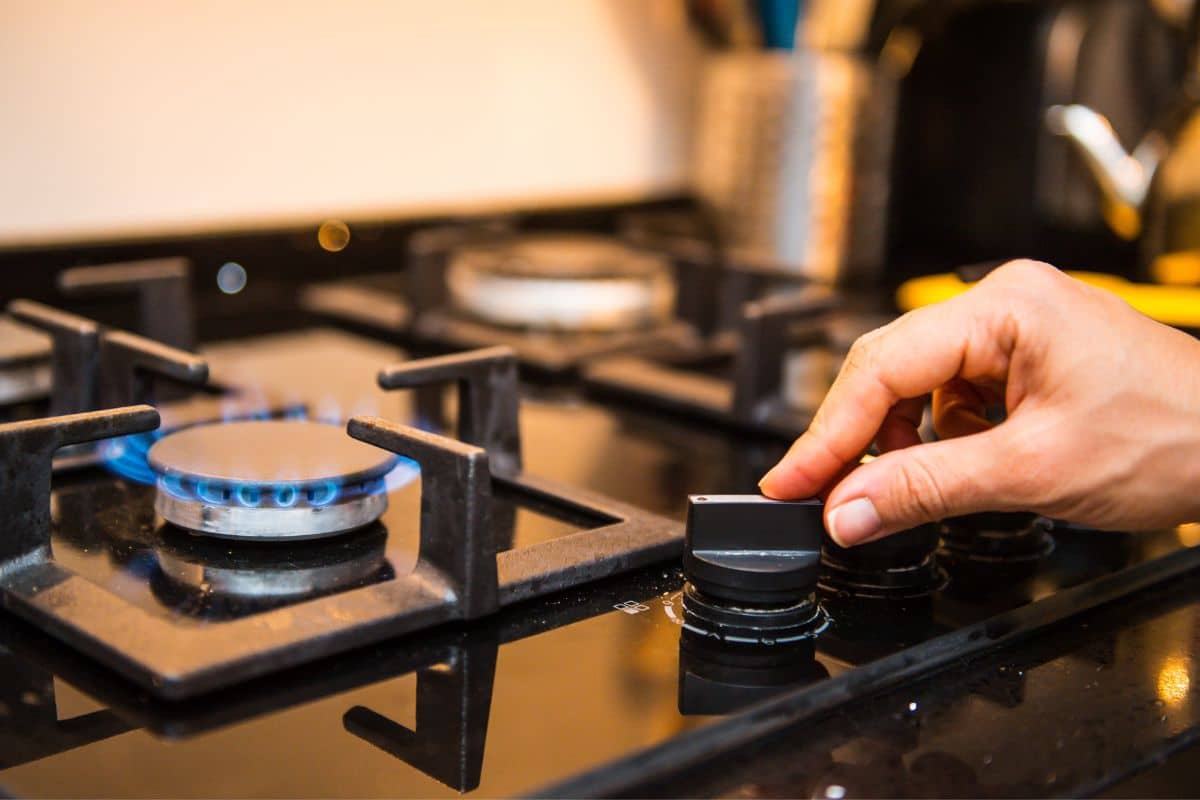
Are There Advantages To A Glass Top Gas Stove?
Although this article is focused on the downsides of a glass top gas stove, we feel we need to be fair and outline the advantages too.
After all, you want to read an article that shows the good and the bad, don’t you?
So let’s take a look at the advantages of a glass top gas stove now!
No Need To Clean Or Replace Burner Pads
As the burners in a glass top gas stove are sealed under the glass surface, your burners are protected. You don’t need to worry about any spills impacting them while you cook your food or any stray bits of food getting in them.
This means you don’t need to clean them or replace them!
It Warms Up Faster
Compared to traditional electrical burners that take at least a minute to warm up, your glass top gas stove will be heated up in just a few seconds, meaning you can start cooking sooner.
It Cools Down Quickly
And just as quickly as they heat up, they cool down quickly too. This reduces your chances of accidentally burning yourself by placing a hand on the glass, or any children harming themselves.
Of course, you still need to allow time for them to cool before you touch them, and should keep children away from the stove at all times.
You Get Extra Counter Space
The glass top can be doubled as additional counter space when you aren’t cooking on it! The extra space is perfect for anyone with a small kitchen.
You can store your plates and bowls there or use them to serve your food. The possibilities are endless!
Easy To Clean
The glass surface makes the stovetop super easy to clean. The burners are protected from any spills or loose bits of food, so you can just wipe the glass top with a suitable cleaner and be on your way.
Modern Look
Glass top gas stove tops also add a modern look to your kitchen. Their shiny and glassy top can give your kitchen a more upmarket feel, without you needing to do much to the decor.
Keeps Surrounding Surfaces Cooler
As the glass cooktop doesn’t conduct heat well, the surrounding areas of your cooker are kept cooler, while only the surface above the burner stays hot.
This reduces the chances of you burning your hands too should you accidentally touch the surface, and you don’t need to worry too much about the placement of your utensils when you are cooking.
What Utensils To Avoid Using On Glass Top Gas Stove Top
There are a few utensils that you should avoid using on your glass top stove. We outlined them briefly earlier, but let’s look at them again in closer detail.
Ideally, any of the following should be avoided when using a glass top gas stove:
- Cast iron pots and pans
- Stoneware pots and pans
- Glass cookware
- Ceramic cookware
All of these have a rough surface and can cause scratches when they are dragged on the glass top. You can use them, but you need to be very careful to avoid dragging them.
Many users of glass top stoves opt to use alternative utensils instead to avoid the chance of damaging the stovetop.
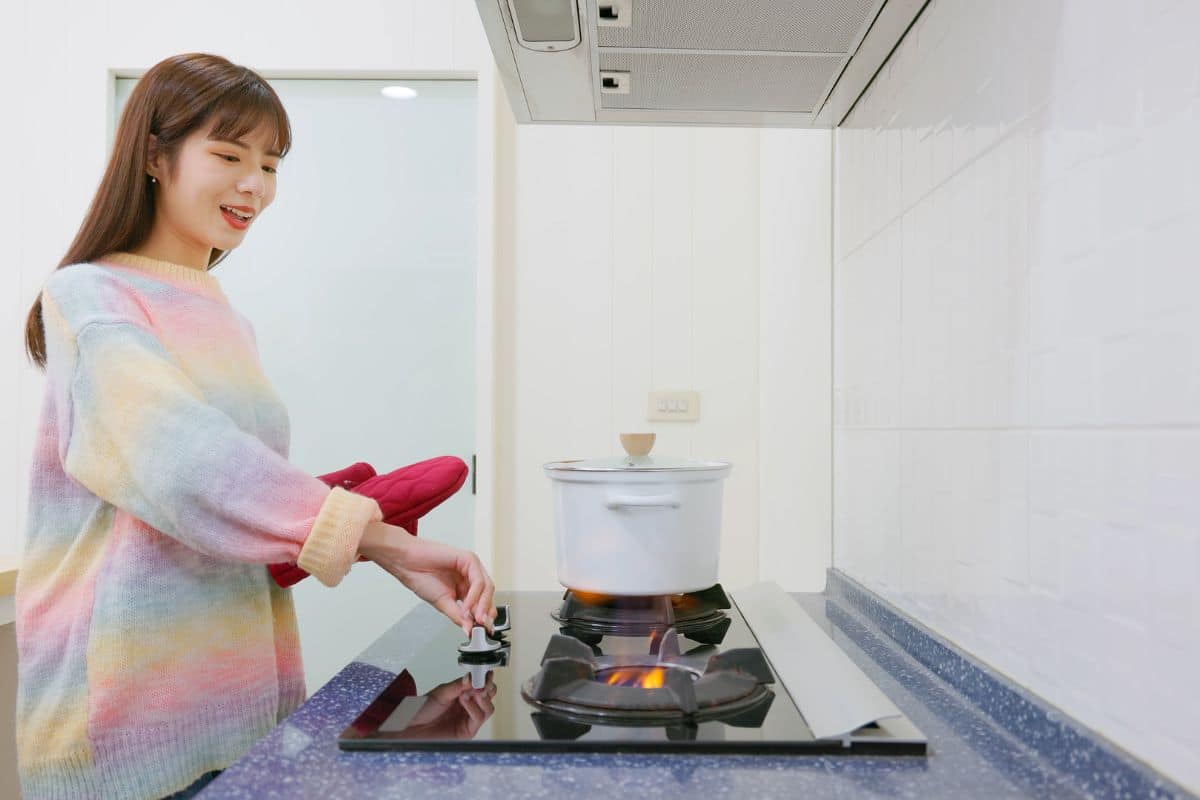
Are Glass Top Stoves Fragile?
Glass top stoves are made of ceramic or glass which can break if there is a temperature difference like a very hot pan being placed on a cool surface. The glass top can also be damaged if a heavy object falls on it.
However, if you handle your glass top stove with care, you can expect it to last for years to come!
Can Gas Stoves Be Dangerous?
If your gas stove is not installed correctly, it can be dangerous. Gas leaks or carbon monoxide poisoning occur if a gas stove or any gas appliance is not installed correctly. It is best to have a gas engineer install any of your gas appliances to ensure they are safe.
You might also choose to have a gas safety engineer visit your property and have an inspection carried out to ensure that your current appliances are safe for use.
Glass Top Gas Stove Disadvantages
Now let’s get into these disadvantages! There are several disadvantages to glass top gas stoves that you should be aware of before purchasing a glass top gas stove.
Let’s take a look at them now to help you learn more about these stovetops. We have listed them all below for you to check out now.
They Need Extra Care
Your glass top gas stove will need special cleaners to be cleaned. You need to avoid metal scouring pads and course cleaners as they can cause scratches. Instead, use special cleaning creams designed for glass.
Not Cost Effective
Glass top gas stoves can be quite expensive, especially when compared to basic stoves or stainless steel ones.
For those on a budget, it might not be the best decision, especially as you might need to factor in the additional installation costs. Remember, you should always pay to have one professionally installed by a gas safety engineer.
Break Easily
The glass used on these stovetops is fragile and can break if you do not care for it properly. Dropping heavy objects above it or dramatic temperature differences can cause your glass to crack, break, or shatter.
Don’t Get As Hot
Your pots and pans don’t come into direct contact with the burner, they don’t get as hot.
You cannot achieve the rolling boil point that you get with other stovetops. In other stoves, your pots and pans have direct contact with the flame allowing it to reach its desired heat.
But with a glass top gas stove, the burner is sealed under a glass surface, meaning the pan never reaches the same level of heat.
While it will still get hot, you might notice an increase in your cooking time. You might also need to make adjustments to your recipes to ensure that you can still achieve the same results.
If you have never cooked with a glass top gas stove before this can take some getting used to.
Need Flat Bottomed Utensils
Glass top gas stoves need flat-bottomed pans and pots. You cannot use rounded pots and pans on these and your pan needs to be the same size as the burner area. You want them to completely cover the heated burner, with the same size diameter.
This might mean you need to replace your current pots and pans, an added expense nobody wants!
You need to use a round bottoms pan to ensure that no heat escapes from underneath your pan as this will stop the pan from achieving the right temperature.
Utensils Need To Be The Right Size
We touched on this above, but your utensils also need to be the right size. Your pots and pans should cover the same space as the heated burner area.
You want them to be able to sit over the heated burner area, with no parts of it visible. This way, your food will be cooked evenly, without any heat getting lost.
It can be tricky to find the right size pots and pans, though, so measure your burners before making your purchase.
Usually, glass top gas stoves will come with two sizes of burners, a big and a small one, allowing you to cook with big and small pans depending on your needs.
Need Smooth Bottom Pans
The bottoms of your pots need to be smooth as well as flat. This is to prevent scratches on your glass top. Make sure you use stainless steel or ceramic-coated pans to prevent any scratches.
Again, you might need to purchase different pans from the ones you already own for this.
Hard To Clean Cooking Mess
Stubborn stains can be tricky to remove, and you might need to scrub the area repeatedly.
While this is fine from time to time, you could be left with an area that might not be completely clean, especially if the stain is left for a while. You might find that when food is baked onto part of the burner, you can never get the shiny finish of the glass back!
Not Very User Friendly
Finally, it can be difficult for blind people to use glass top gas stoves. It can be difficult for them to place their pots over the burning area.
The smooth surface of the glass means they cannot use the sense of touch to identify the area. And applying the heat to help do this can result in injury.
If the pan is not placed directly in the center, it won’t be heated evenly and can stop your food from cooking correctly. These styles of stoves are not the best option for blind people, and they should be avoided where possible.
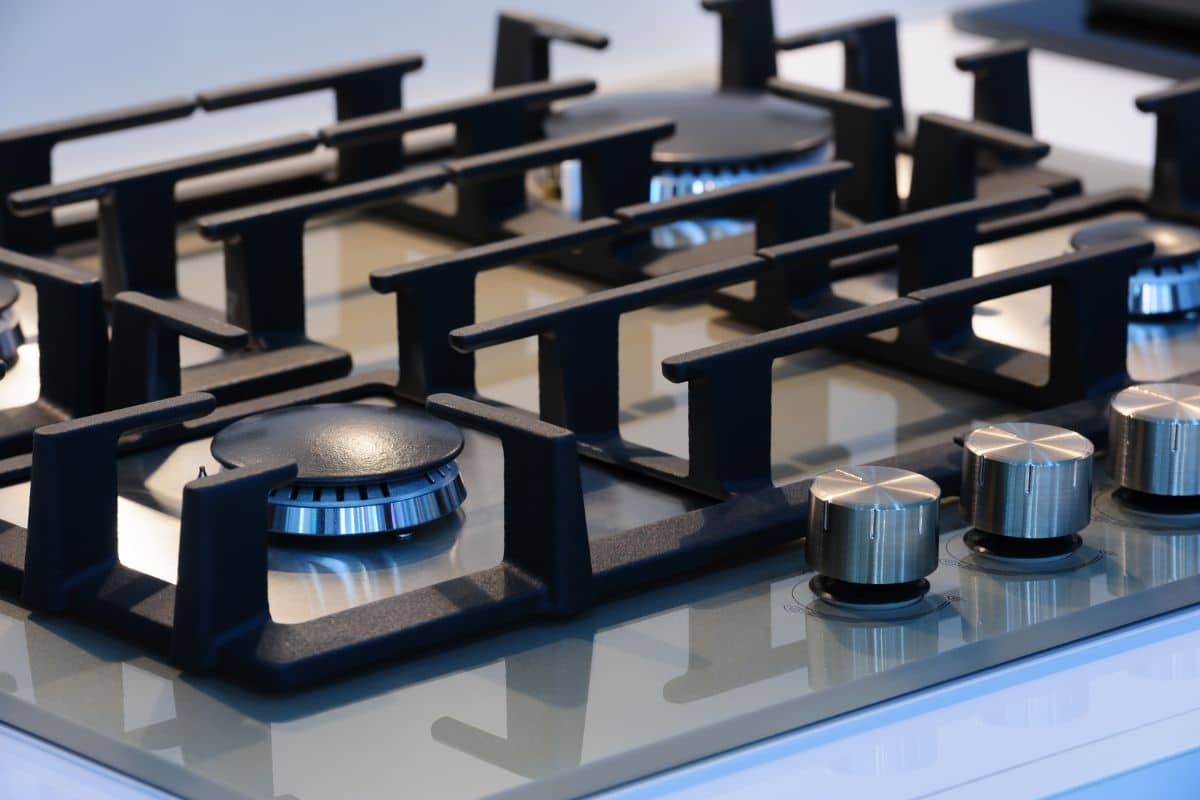
Disadvantages Of Built-In Hobs
Now that we have covered the disadvantages of glass top gas stoves, you might be wondering what the disadvantages of built-in hobs are.
Built-in hobs are a popular choice these days in a modern kitchen, creating a sleek and integrated effect that everyone loves.
However, despite their style, there are some disadvantages that you should consider when making your decision.
We have five of the most common disadvantages people experience with built-in hobs listed below for you to check out now.
1. Tricky To Install
Built-in hobs can be tricky to install compared to free-standing systems.
You will need an electrician to install the hob and run all the wires to the necessary power source. In older homes, this can be tricky, and you might find yourself needing to rewire the room.
The additional cost of an electrician to complete the work can also make this an expensive appliance. The same applies when it comes to changing or replacing them.
You will find that you need to pay more for a replacement, and it might be challenging to find one to fit the same space without needing to make adjustments to your worktops.
2. Difficult To Use
If you have been using a gas stove, the switch to a built-in hob can be tricky. Built-in hobs tend to run on electricity, which is very different to cooking with gas.
You will find that you need to wait for the burners to heat up and they can take a while to cool down. You can also struggle to regulate the temperature on them, meaning you might need to make changes to some of your recipes.
You can find built-in hobs that run on gas, but you do need to consider the added cost of having it professionally installed and regularly checked for your safety.
3. Expensive
They can be expensive compared to a gas stovetop. Of course, this does depend on the size of the hob and where you are purchasing it from, but you will want to consider your budget carefully when making your decision.
4. Hard To Change
As the built-in hob is installed inside your cabinets, they cannot be moved. This means you need to consider very carefully the position in which you want the hob before you have it installed.
It also makes them incredibly difficult to change when you want to replace them, especially if you have filled the cabinets below them with shelves.
5. Can Cost More
Depending on your bills, your built-in hob might end up costing you more. This does depend on how much you spend on gas compared to electricity and how much you use the hob.
You will also want to check the energy efficiency rating before you make your purchase to ensure that it isn’t going to waste electricity, costing you more money.
Final Thoughts
And there you have it, all the disadvantages and drawbacks of a glass top gas stovetop! While there are a lot of disadvantages that need to be carefully considered, it’s worth noting that there are some positives too.
Providing that you use the correct utensils and look after your glass top gas stove, there is no reason why it can’t feed you and your family for years to come!



